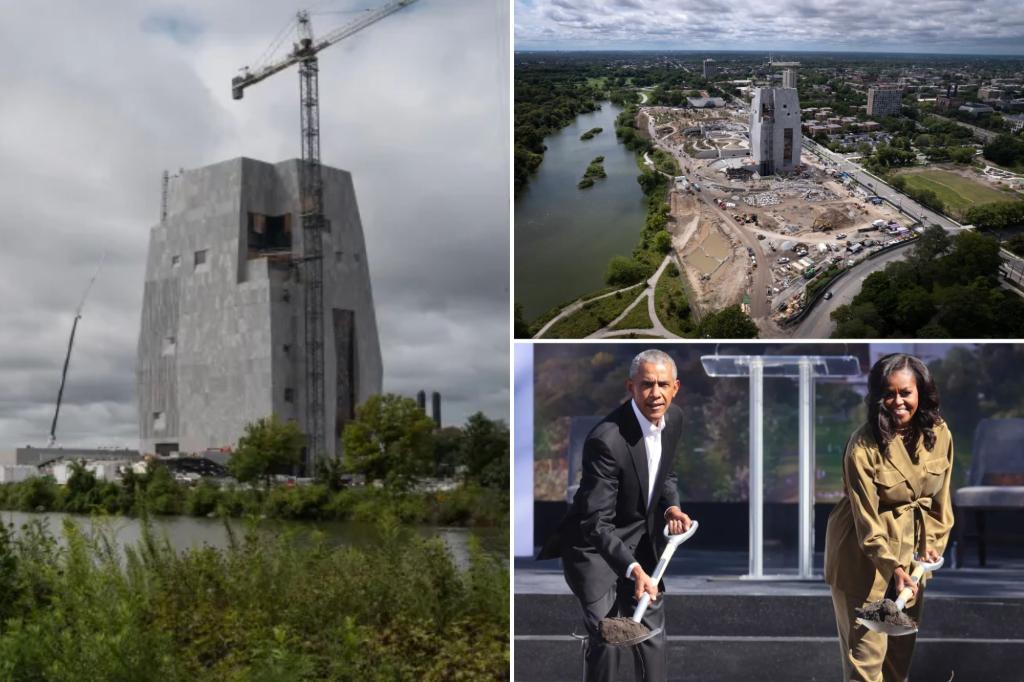Obama Presidential Center Costs Triple as Project Nears Completion
The journey of the Obama Presidential Center from vision to reality illustrates how ambitious architectural projects often evolve far beyond their original scope and budget. What began as a $300 million proposal has transformed into an $850 million landmark on Chicago’s South Side, revealing the complex interplay between presidential legacy, urban development, and financial oversight.
When the Obama Foundation first unveiled plans for the presidential center in Chicago’s historic Jackson Park, it represented not just a repository for presidential papers but a vision for community revitalization. As designs were finalized in 2017, costs had already climbed to $500 million, reflecting the project’s expanding ambitions. By 2021, the estimate jumped again to $700 million for construction alone, with total projected costs reaching $830 million. Now, as the project approaches completion, the Obama Foundation confirms the final price tag will reach approximately $850 million – nearly triple the initial estimate. Despite these escalating costs, the foundation reports significant fundraising success, with its net assets recently exceeding $1 billion after raising $195 million from nearly 92,000 donors last year alone.
While the center’s physical structure takes shape, questions arise about financial safeguards initially promised to protect taxpayers. When agreements were established to build the center, the Obama Foundation pledged to create a $470 million reserve fund as protection against potential taxpayer liability. However, recent tax filings reveal that only $1 million has been deposited into this fund, with no recent contributions. This shortfall has drawn criticism from opponents like Illinois GOP Chair Kathy Salvi, who characterized the project as an “abomination” that puts taxpayers at risk. “It should come as no surprise that the Obama Center is potentially leaving Illinois taxpayers high and dry — it’s an Illinois Democrat tradition,” Salvi stated, suggesting the project represents a pattern of fiscal irresponsibility.
The dramatic evolution of the Obama Presidential Center mirrors similar trajectories of other presidential libraries and museums, which frequently experience significant budget increases between conception and completion. Presidential libraries serve multiple functions – historical archives, tourist attractions, and symbols of legacy – often creating pressure for grander designs and expanded facilities. The Obama Center’s vision is particularly ambitious, aiming to transform its South Side location into a cultural and economic hub rather than merely housing presidential artifacts. This expanded mission helps explain some of the cost increases, though questions remain about whether such expansions should come with greater financial oversight when public resources and commitments are involved.
Despite the controversy surrounding costs, the Obama Presidential Center represents a significant investment in Chicago’s South Side, an area historically underserved by major development projects. Supporters argue that the center will create jobs, attract tourism, and catalyze additional investment in surrounding neighborhoods. The foundation has emphasized community benefits including workforce development programs, landscaping improvements to Jackson Park, and commitments to hire local residents. These potential community benefits provide context for understanding the project beyond mere dollar figures, though they don’t entirely address concerns about fiscal management and transparency regarding the promised reserve fund.
As the Obama Presidential Center prepares for its delayed opening in spring 2025, it stands as both an architectural achievement and a case study in project management and financial oversight. The threefold increase in costs from initial estimates to final execution raises important questions about how such projects are planned, budgeted, and communicated to stakeholders. While the center will undoubtedly become a significant cultural institution for Chicago and a tribute to America’s first Black president, its legacy will also include lessons about financial planning, transparency, and the balance between ambitious vision and fiscal responsibility. For future presidential libraries and similar public-private partnerships, the Obama Center’s journey from conception to completion offers valuable insights about the challenges of turning presidential legacies into concrete reality.


